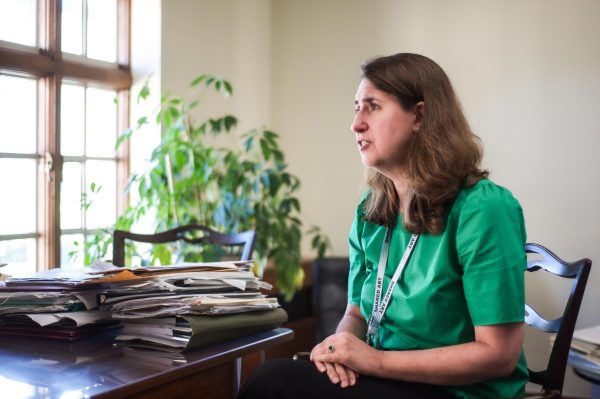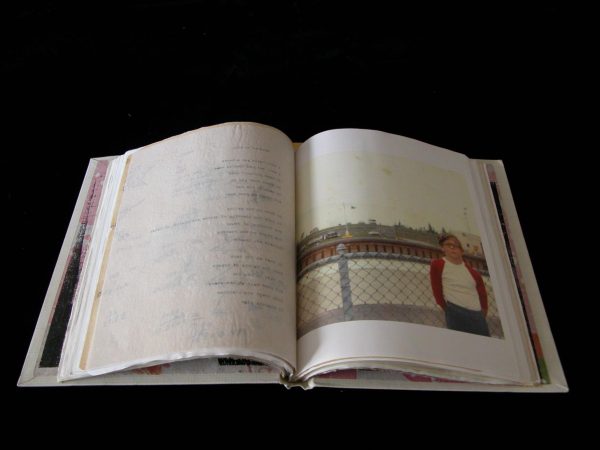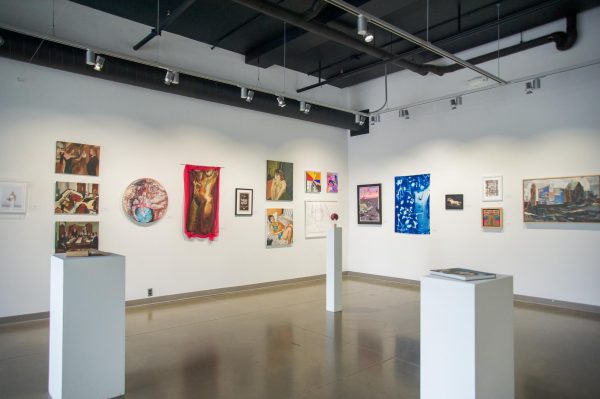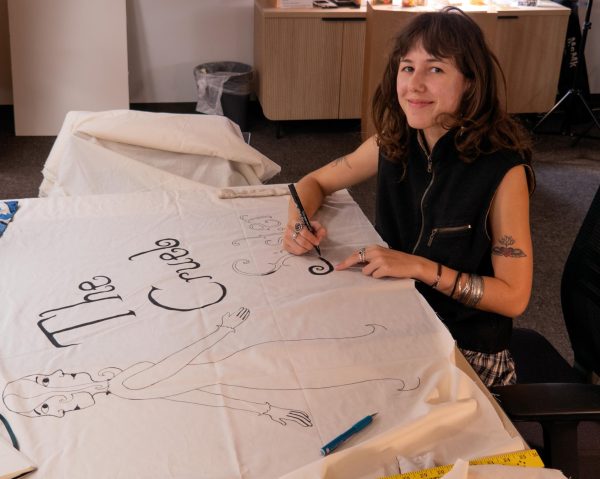Dr. Ridha Moumni Speaks on Tunisian Art, History
The Art History department hosted Dr. Ridha Moumni in Hallock Auditorium Tuesday, Oct. 2 for his presentation, “Art, Life, and Politics in Post-War and Postcolonial Tunisia.” Moumni’s presentation discussed how the aesthetic of Tunisian art was influenced over time by political actions in and around the country.
Located in North Africa and bordered by the Mediterranean Sea, Tunisia gained its independence in 1956. Although the French never officially colonized Tunisia like they did neighboring Algeria, they established a protectorate in 1881. Although the governmental structure was preserved, Tunisian ministers were still appointed, and the bey remained the official monarch, supreme authority was passed to the French resident general.
This political climate resulted in the substantial development of both traditional Tunisian painting and European aesthetics.
Moumni’s talk covered the history of Tunisia under the influence of France and addressed various artists who either worked under the traditional Tunisian aesthetic, learned and studied under a French lens, or incorporated the forms together.
“One of the main concerns of the artist is to sell their art and live through their art,” Moumni said.
Moumni discussed the painters Yahia Turki and Jellal Ben Abdallah in depth. Turki painted landscapes of Tunisia with a dynamic and rigorous style that was distinct from tight European aesthetics. With this type of work, Turki became a famous painter in the Tunisian art scene. In contrast, Jellal Ben Abdallah had a very traditional style. He painted Tunisian scenes that he grew up seeing. “The traditional Tunisian scene was [Abdallah’s] identity,” Moumni said.
Moumni also explored the role of women in Tunisian art and the importance of the female figure. He discussed Leila, the first feminist icon presented in Tunisian art. Painted by artist Aly Ben Salem, Leila promoted everyday Tunisian women. Salem painted clothed women, subverting the dominant Europen aesthetics of the time which showed the naked female body. He also strived to show the traditional Tunisian way of living through his work.
In contrast, Jellah Ben Abdallah’s paintings of traditional environments highlighted women’s important roles in society. Abdelaziz Gorgi made tapestries and mosaics which illustrated women’s lives after Tunisia’s independence.
The event was attended by students, and faculty members, and community members. Students in attendance said the event was a useful supplement to their ongoing art history studies.
“Dr. Moumni’s presentation was a wonderful addition to the study of Tunisian art history, relating Tunisian independence to its relative artistic bloom,” said College first-year Grace Kirk, who is enrolled in the Art History department’s Approaches to African Art class.
Moumni’s talk highlighted the broader cultural significance of the shifting political climate of Tunisia, particularly as it changed over a relatively short period. Understanding the way that art developed in this transformative time allowed for an additional visual aid into the ever-changing culture in Tunisia’s path to independence. The window into art made that transition much more accessible and comprehensive.







